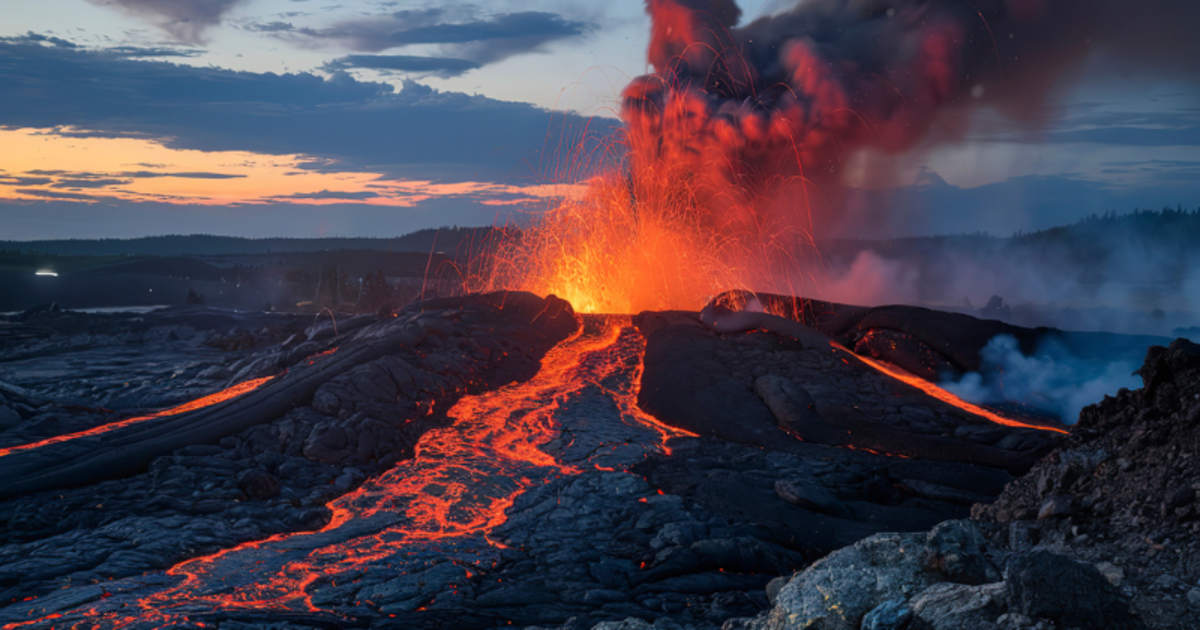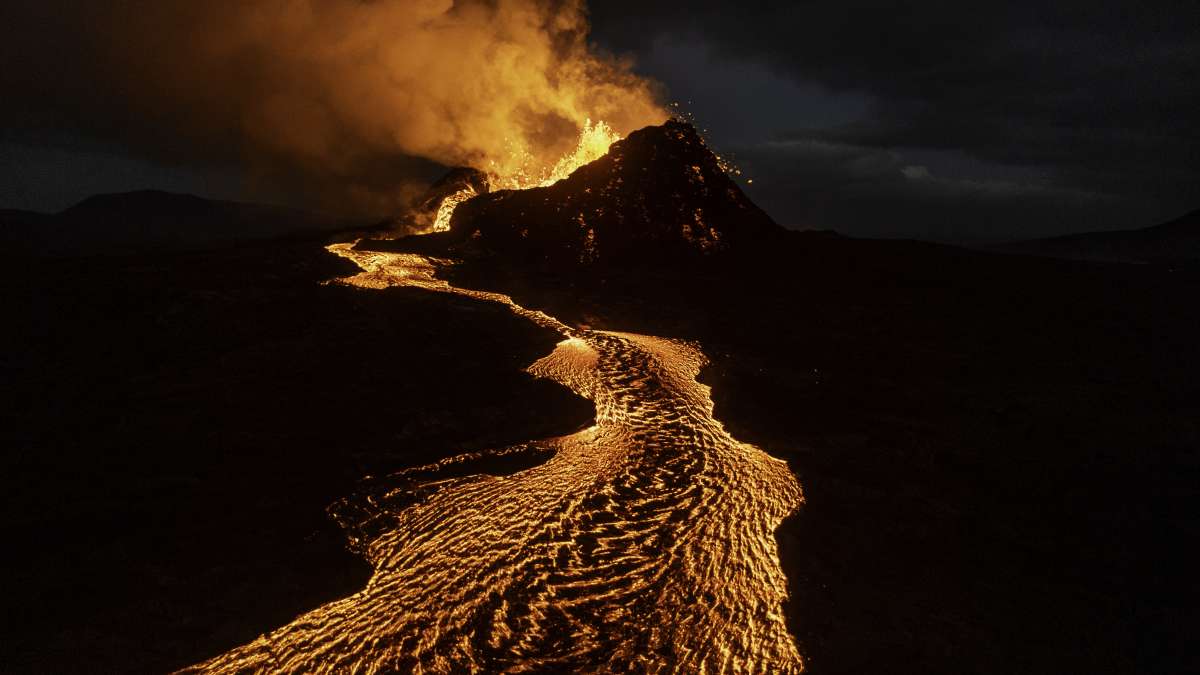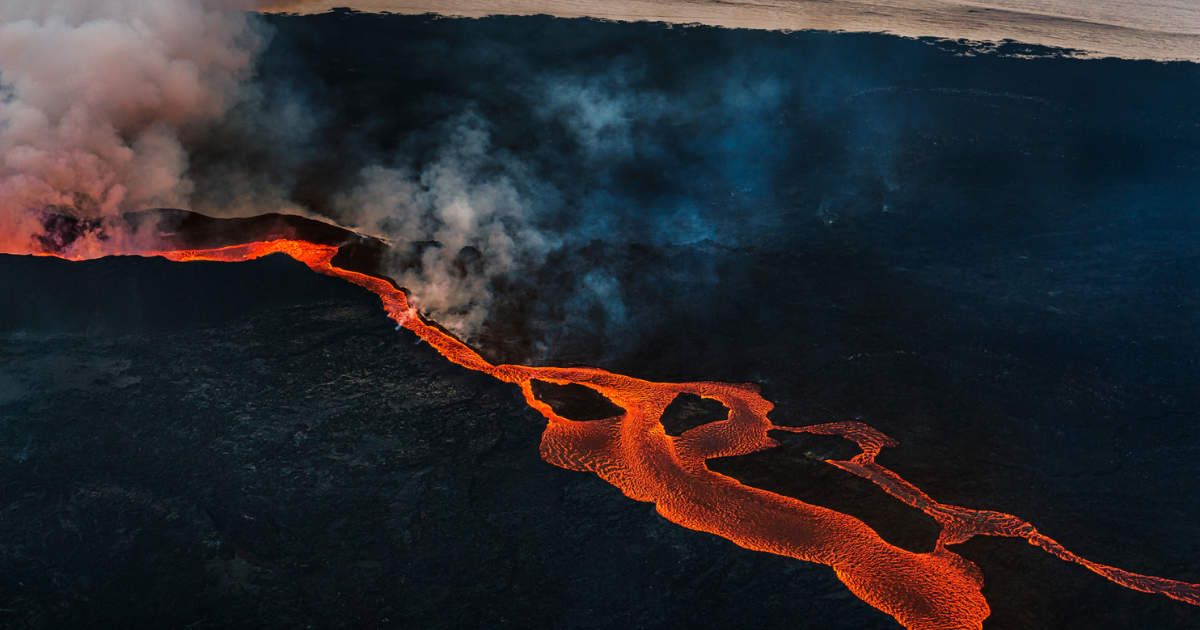The Fagradalsfjall volcano region had been dormant for over 815 years before the recent string of eruptions.
Iceland has once again experienced a dramatic volcanic eruption, as part of an ongoing series of events that started in 2021. It unleashed rivers of molten lava from a newly opened fissure, painting everything in its color as it flowed. The glowing lava continues to flow and has settled to the east of the rupture, creating a beautiful yet hazardous terrain. The Icelandic Meteorological Office (IMO) confirmed the news about the eruption in an official announcement.
Parker Sheppard, a travel FPV drone pilot, captured stunning drone footage of the eruption. “I was lucky enough to make it out to capture it roughly 24 hours later. One of the most challenging volcanoes I have ever filmed,” he said on his YouTube video. “Oh my god, I can’t believe I’m about to send a drone into a volcano again. This never gets any less scary,” he could be heard saying in the video. Sheppard was very aware of the risks of flying his drone over the volcano. “It was literally getting hit by lava in that volcano. The drone is like super warm. It didn’t actually melt anything on it,” he said.

A photo of a volcanic eruption with molten lava flowing down rugged terrains. (Representative Image Source: Getty Images | Petru Funar.)
Where Did the Eruption Take Place?
The eruption occurred on the Sundhnúksgígaröð crater, located to the east of Iceland on the Reykjanes Peninsula. According to IMO, the eruption began before 4 am local time on July 16, 2025, and it then created an eruptive fissure that, as of now, has extended further north than any of the fissures that have appeared since December 2023.
The latest reports put the fissure at around 1.5 miles long, and in addition to that, a small fissure has opened up to the west of Fagradalsfjall, another volcano that started to erupt around March 2021. This fissure is estimated to be around 1,640 feet in length.
Current Data on the Fissure
The recent data indicates that seismic activity at the site is already starting to decrease, and only a few earthquakes are happening per hour. The lava, however, is flowing through the night and has made its move towards both the east and west. People in the area reported seeing “witch’s hair” floating across the air, according to IFL Science. They are sharp, fine, and fragile glass needles that are formed in volcanic eruptions when lava droplets fall and rapidly cool and stretch.
As they are very light, these fibers of glass can travel long distances and can cause a variety of skin and eye infections. “Changing wind directions mean that gas pollution, ash, and pollution from vegetation fires can spread in all directions from the eruption site,” noted IMO. Considering these situations, the risk from airborne pollution is believed to be moderate. Moreover, stakeholders need to consult the IMO’s “daily gas dispersion forecasts to assess day-to-day conditions.” High levels of gas pollution are being measured in the Reykjanesbær region, but they are decreasing. For local communities, wildfires are believed to be the largest threat at present. Experts advised residents to stay indoors, keep windows closed, and turn off ventilation systems. It is best to breathe through the nose, noted authorities.

Seen from an aerial view, lava flows from the Sundhnúkur volcano on June 3, 2024, on the Reykjanes peninsula near Grindavik, Iceland. The volcano, which has erupted five times since December, has forced the evacuation of the southwestern fishing town of Grindavik as well as the nearby Blue Lagoon geothermal spa. (Representative Image Source: Getty Images | John Moore)
The Current Status of the Fissure
According to the reports, the eruption is no longer confined to a single fissure. It is the twelfth eruption to happen since the seismic activity resumed in 2021. The Fagradalsfjall volcano area has been dormant for over 815 years. The new activity marks the start of a long era for volcanic eruptions in that region, which is made up of volcanoes for everyone to see. Iceland is on the Mid-Atlantic Ridge in the North Atlantic Ocean, a fault line in the ocean bed that extends even further between the Eurasian and North American tectonic plates.
This is a developing story, and we’ll update you as we learn more. Information about Volcanic eurptions is swiftly changing, and Knewz is committed to providing the most recent and verified updates in our articles and reportage. However, considering the frequency in developments, some of the information/data in this article may have changed since the time of publication. You can get official alerts and updates from the Icelandic Met Office , and health advice from the Directorate of Health.
from the National Weather Service and the Governor’s office. You can also find safety tips and resources here. (edited)
